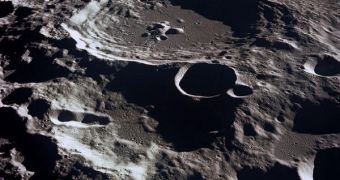The Paragon Space Development Corp. is the company that is currently working on sending a mini-greenhouse to the Moon, preferably by 2014, according to company officials. The constructions will hitch a ride to Earth's natural satellite on the back of a rover/lander currently being constructed by Odyssey Moon, as part of the Google Lunar X Prize competition. Details of this collaboration will be presented today in Tucson, Arizona, at a news conference held by Paragon.
The two companies are currently working together to construct the future craft's thermal shield, which is supposed to be strong enough to allow the lander/rover to land safely on the Moon. At the same time, the partners need to build the outer shield of the ship in such a manner that it will accommodate the envisioned biosphere, dubbed the “Lunar Oasis.”
“It's all very aggressive. But it isn't fun if it isn't aggressive,” PSDC chief executive officer Taber MacCallum said.
“We are thrilled to have Paragon join the team with their expertise in thermal and biological systems. I am incredibly inspired by our hope to grow the first plant on another world,” Bob Richards, the founder and chief executive officer at Odyssey Moon, told in a news release.
“People of all ages will get excited about the idea of growing a plant on the moon. Imagine a bright flower on a plant in a crystal clear growth chamber on the surface of the moon, with the full Earth rising above the moonscape behind it; these are the ideas that got me interested in space,” MacCallum's wife, Jane Poynter, added in the same release. She is also a founder and president of Paragon.
“The first plant to grow from seed and complete its life cycle on another world will be a significant step in the expansion of life beyond the earth. The sooner we do it, the better,” NASA's Ames Research Center planetary scientist Chris McKay stressed in the same document.
The idea is not that far-fetched, considering the fact that plants already seem to grow very well in the zero-gravity environment of the space. That is to say, the atmospheric conditions on the Moon will not pose too great of a threat to the mini-biosphere. The only things that could interfere with the growth of the plant would be if an asteroid fell on top of the crystal container, or if a severe storm tipped it over and broke it. Sand could also cover it during large storms and prevent the sunlight from hitting it.

 14 DAY TRIAL //
14 DAY TRIAL //